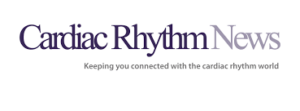HRS aims to strengthen electrophysiology advocacy amid growing atrial fibrillation challenges
Editor's Note
The Heart Rhythm Society (HRS) announced the formation of Heart Rhythm Advocates, a new 501(c)(4) nonprofit advocacy organization aimed at bolstering support for cardiac electrophysiology (EP), Cardiac Rhythm News October 23 reports. This initiative complements HRS's existing 501(c)(3) nonprofit structure and responds to the increasing prevalence of atrial fibrillation (AF), which affects over 10.5 million Americans. Rising cases of AF, the growing number of electrophysiology procedures, and ongoing healthcare innovations have intensified government scrutiny on procedure costs, leading to significant reimbursement cuts for common AF treatments.
HRS's new advocacy arm aims to enhance lobbying efforts and political activity to benefit both patients and the EP community. The society has committed $1 million in initial funding to establish Heart Rhythm Advocates, which will focus on advocating for fair reimbursement, policy influence, and expanding access to quality care. According to HRS president Kenneth Ellenbogen, the new entity will allow HRS to amplify its impact and strengthen the support for electrophysiologists and patients facing the challenges of heart rhythm disorders.
In addition to launching Heart Rhythm Advocates, HRS has reaffirmed its stance on the critical role of electrophysiologists in AF ablation. A policy statement published in the Heart Rhythm Journal on October 1 emphasizes the importance of formal training in cardiac EP and adherence to rigorous standards for AF ablation. The statement outlines key principles, including the necessity of EP-based testing, mapping, and advanced ablation techniques to ensure optimal patient outcomes. Ensuring complete pulmonary vein electrical isolation during ablation is highlighted as essential for preventing AF recurrence.
Together, these initiatives show HRS's dual focus on advancing electrophysiology knowledge and driving advocacy. By establishing Heart Rhythm Advocates, HRS aims to better address US patients’ needs while maintaining its mission of reducing death and suffering from heart rhythm disorders.
Read More >>

 Free Daily News
Free Daily News